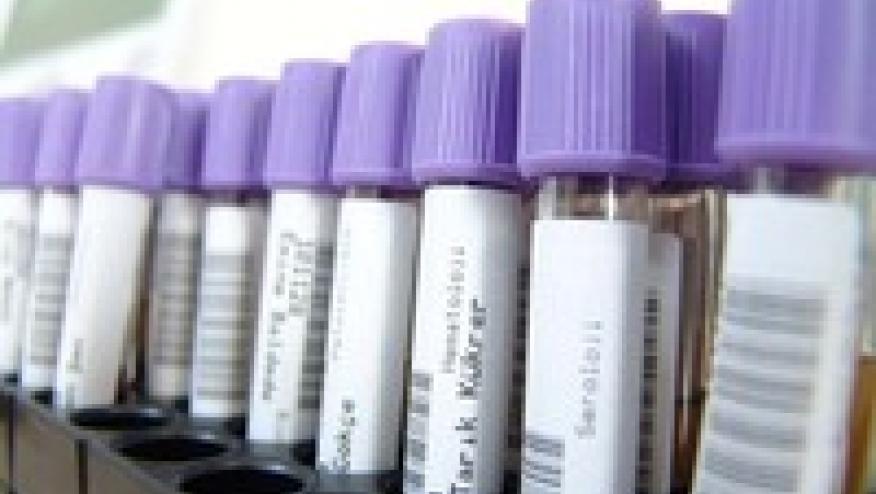CBC Hidden Pearls Save

CBC…it’s easy as 123! The complete blood count (aka, CBC) is the most routine, but indispensable, of all medical assessments. The CBC result can spark the diagnosis of infection, leukemia, ITP and Still’s disease. A measure of the vital cells that circulate, sustain and protect life, the CBC has become the (albeit mundane) pivotal gauge of wellness, drug safety or disease activity.
Early in training, each of us is taught to look to the CBC for critical information. It's easily obtained, cheap and chock full of clues, news and reasons to act, worry, test or not. After years of training, practice and patient care, the CBC continues to inform and guide.
Beyond the marquee numbers (WBC, hemoglobin, hematocrit, platelets), the CBC report comes with a supportive cast of numbers (e.g., MCV, MCHC, RDW, MPV), cell subsets and morphologies that shed light and point the way.
Numerous studies have reinforce old lessons and revealed new clues and clinical associations and to be gleaned from the CBC report. I’ve compiled several CBC “pearls” and their interpretation below:
CBC and Inflammation: while many rely on the acute phase reactants (C-reactive protein [CRP], erythrocyte sedimentation (ESR) to assess or identify inflammation, rheumatologists learn early that nearly half of patients with obvious inflammation will have normal ESR and CRP values. And while there are other reactants (SAA, haptoglobin, complement levels) that can be measured, one need not look beyond the CBC for supplementary inflammatory evidence, as the consequences of inflammation includes: anemia of chronic disease, leukocytosis and thrombocytosis.
RDW (red cell distribution width): is a measure of anisocytosis (variation in RBC size). The RDW is increased in iron deficiency and macrocytic anemias. But did you know that the RDW may also be increased with inflammation:
- Inflammation: RDW has been shown to rise with inflammation in multiple disorders. Higher RDW values have been seen in RA, lupus, adult-onset Still’s patients (AOSD), etc. The relationship between RDW and CRP or other proinflammatory cytokines is unclear.

- Thrombosis: RDW is high in patients with MI, deep vein thrombosis and pulmonary embolism. http://www.ncbi.nlm.nih.gov/pubmed/25903822
- Cardiovascular risk: this association has been shown in the general population and in rheumatoid arthritis patients that higher RDW are associated with MI, CVE events, metabolic syndrome and cardiovascular events.
- Poorer outcomes: in patients with certain cancers, COPD
Neutrophil-Lymphocyte Ratio (NLR): a relatively new measure/ratio thought to indicate the level of subclinical or overt inflammation. It is calculated by dividing number of neutrophils by number of lymphocytes. It has been shown to be elevated in inflammatory conditions, diabetes, cardiovascular disease, and smoking. Racial differences are also evident as whites have slightly higher NLR than non-Caucasians. Higher NLR were observed inflammation, RA, Behcets activity, cardiovascular risk
- NLR is correlated with disease activity in rheumatoid arthritis. (http://buff.ly/1oua999) as measured by the CRP, ESR, DAS28 score.
- High NLR ratios are also seen in pancreatitis, psoriasis, FMF, optic neuritis, poor outcomes with CAD and cancer.
- The optimal cut-off value is unclear and requires further study. NLR > 4.0 should provoke concern, especially if as the NLR rises.
MPV (mean platelet volume): platelet volume is increased with large (immature) platelets and with increased platelet turnover. It is inversely proportional to platelet count and is inversely, significantly correlated w/ inflammation (ESR, CRP levels) and is essentially, a negative acute phase reactant (http://buff.ly/1TKi4YU ).
- High MPV values have been seen in RA, Behcet’s, familial Mediterranean fever, SLE, gastroenteritis, appendicitis and severe COPD . In RA, MPV levels may normalize in the course of anti-inflammatory therapy.
- Conversely, the MPV can be influence by CV risk factors (smoking, hypertension, dyslipidemia, diabetes) and there is a good correlation between a high MPV and the risk of thrombosis and cardiovascular and cerebrovascular disorders and venous thromboses.
Neutrophil counts: An abstract at the 2014 ACR annual meeting (Nashita, et al, #2506) showed that a drop in WBC or neutrophil counts > 1000 or an eosinophil increase by >0.5% strongly predicted responses to tocilizumab in RA. Another small study in RA failed to show this same association (http://buff.ly/1R9YrJN). Tocilizumab is known to affect neutrophil function and may cause neutropenia, which has not been associated with a higher infection risk.
Basophils counts: a recent report has linked basophil counts with disease activity in SLE and that basophil counts were similar to conventional markers (leukocytes, platelets, dsDNA levels) in differentiating active from inactive SLE. (http://buff.ly/1RablaC)
For a quick and comprehensive review of the complete blood count, go to RheumaKnowledgy.com, a free, online rheumatology textbook.







If you are a health practitioner, you may Login/Register to comment.
Due to the nature of these comment forums, only health practitioners are allowed to comment at this time.